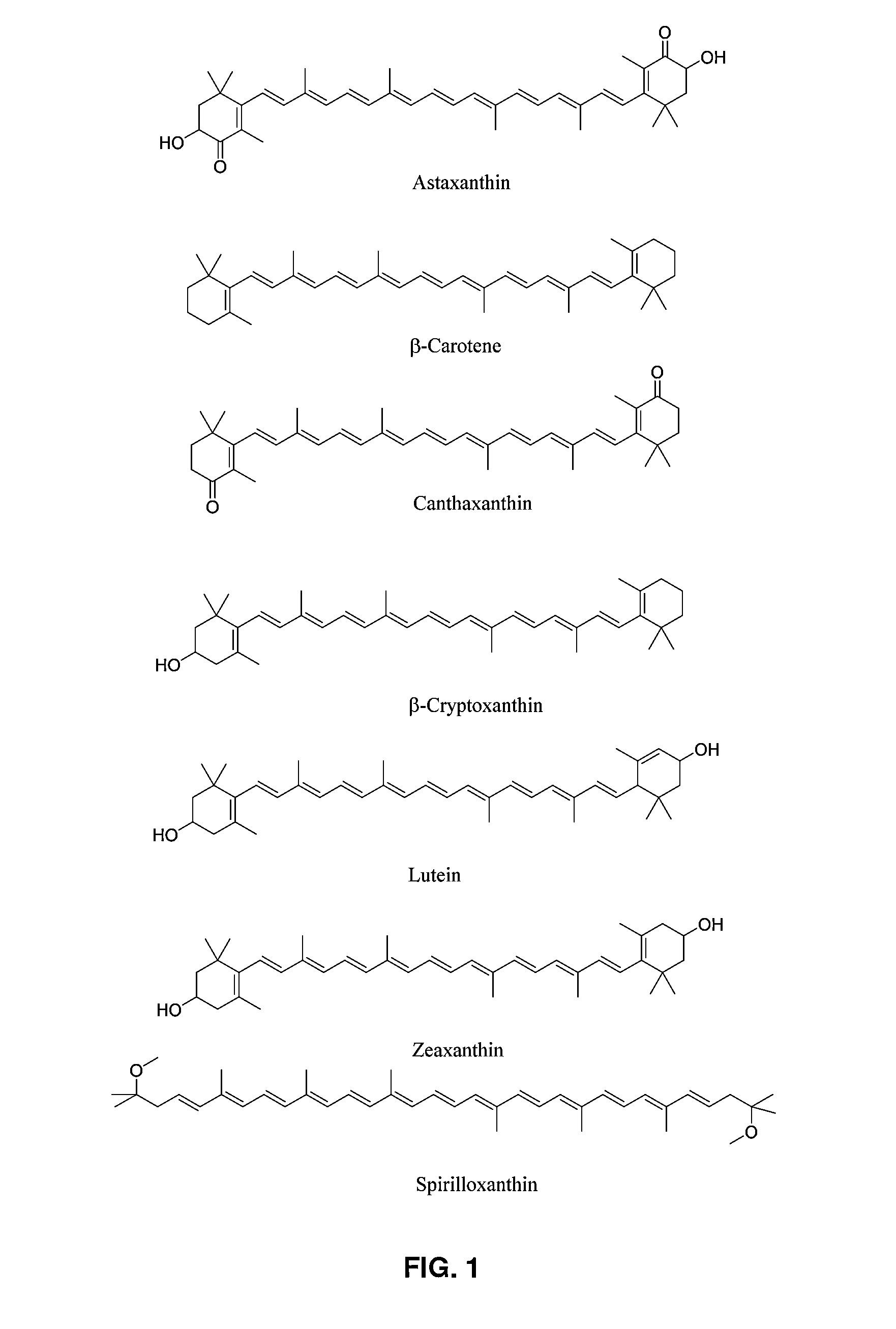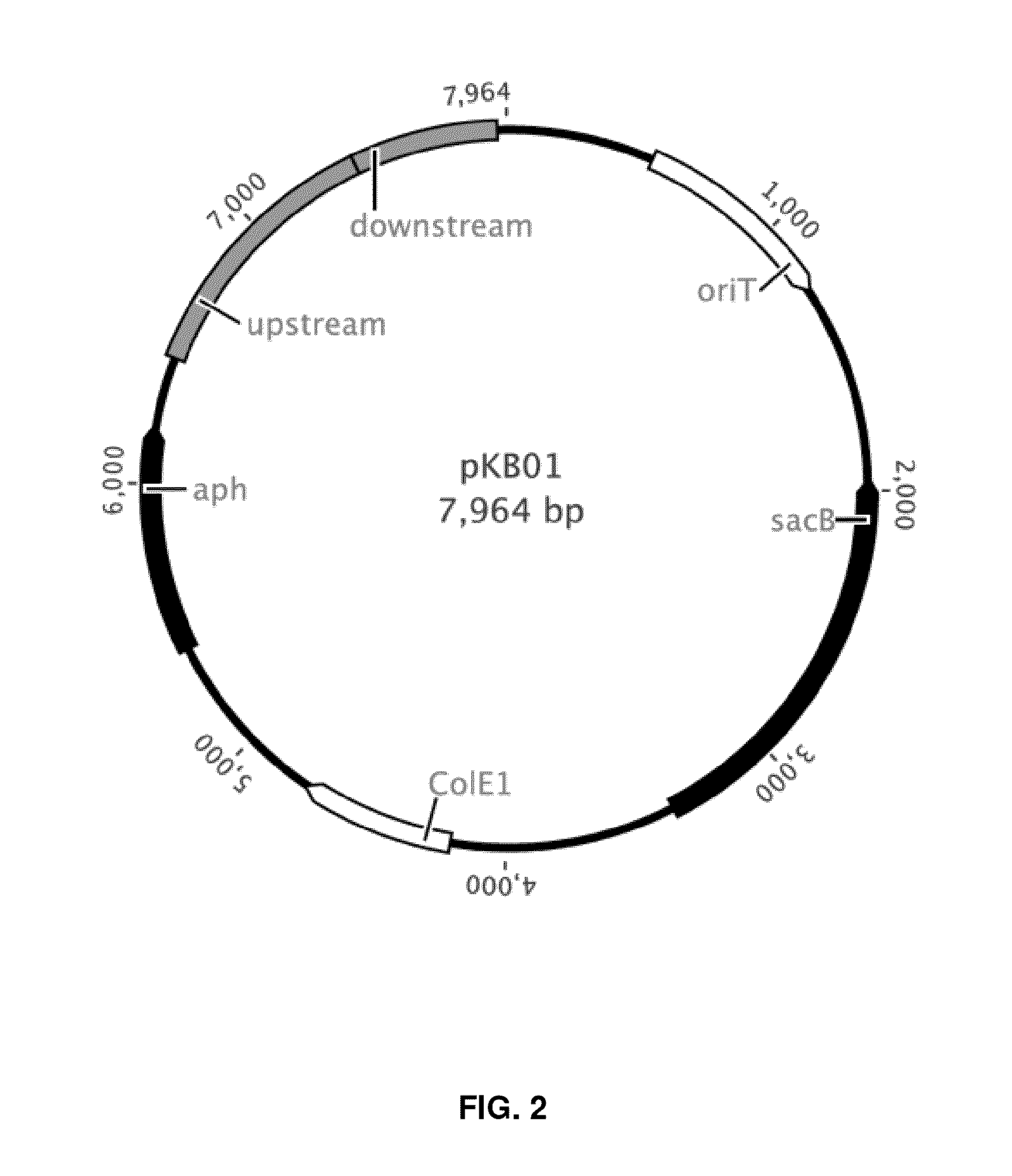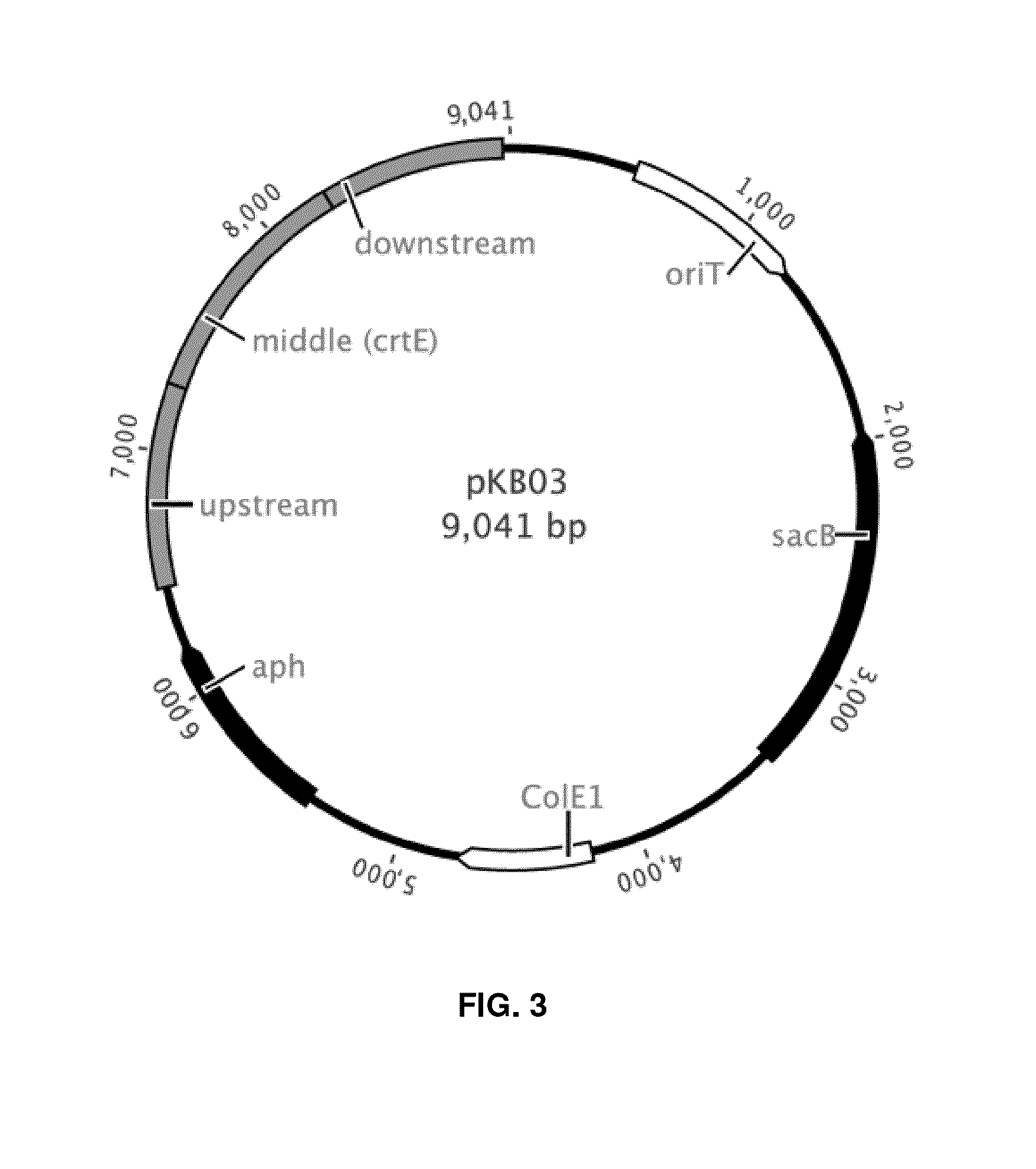Methylotrophs for aquaculture and animal feed
a technology of methylotrophs and aquaculture, applied in the direction of lysine, food preparation, microorganisms, etc., can solve the problems of limited use and insufficient conversion of sda to dha in fish, and achieve the effect of reducing costs and more appealing pigmentation
- Summary
- Abstract
- Description
- Claims
- Application Information
AI Technical Summary
Benefits of technology
Problems solved by technology
Method used
Image
Examples
example 1
Directed Evolution of Methylotrophic Bacteria
[0222]Directed evolution is capable of yielding enhancement of a desired trait, such as selection for highly pigmented organisms. The technique is adapted here for the selection / evolution of M. extorquens overproducing astaxanthin and a number of essential amino acids. According to the present invention, one route to carotenoid production is to simply evolve cultures under the desired industrial conditions in order to improve growth rates and / or survival under the relevant environmental parameters. As this is proceeding, the visible nature of carotenoids can be used as a screen for lineages that are either losing coloration while they adapted, or those that have fortuitously become more highly pigmented. An example selection regime would be serial transfers in minimal medium containing just methanol. Upon plating cultures occasional isolates may be noted for having a “dark pink” or “reddish” colony morphology. This approach has yielded va...
example 2
Directed Genetic Engineering of Methylotrophic Bacteria Using Recyclable Antibiotic Marker System
[0224]By combining a “feeder” strain of E. coli that requires a given nutrient (such as methionine, or other amino acids) with the methylotroph utilized (such as M. extorquens) it is possible to select for strains whose amino acid production feed their partner and allow growth of the consortia. In order to correlate production with growth advantage of that new genotype it is essential to perform these experiments in a spatially structured manner, such as on agar or agarose-containing petri dishes that contain a food source only utilizable by E. coli (such as glucose or lactose) but omit the addition of the nutrient that that E. coli mutant requires. Selection conditions involve plating the two strains together for an extended period of time (multiple days or weeks), then washing the combined cell material, vortexing, and re-plating a dilution onto fresh medium as before. In some instance...
example 3
Directed Genetic Engineering of Methylotrophic Bacteria Using Alleic Exchange Vectors
[0244]Another option for multiple genetic manipulations, which also avoids leaving behind undesired scars, is to use an “in-out” system (FIG. 7 in U.S. Ser. No. 61 / 863,701 shows rationale and plasmid useful for clean allelic exchange in Methylobacterium and other methylotrophs via sucrose counter selection. The strategy and plasmid used to enable antibiotic-free allelic exchange in Methylobacterium and other bacteria are illustrated in FIG. 1 of Marx, 2008. BMC Research Notes (1:1)). The basic idea behind these techniques is to first employ positive selection to select for single crossover integration of the entire donor vector due to recombination between a cloned region spanning the desired mutation in the vector and the corresponding chromosomal site. In the second step, negative selection is used to select for isolates that have recombined out the vector sequence. If the second recombination eve...
PUM
| Property | Measurement | Unit |
|---|---|---|
| Fraction | aaaaa | aaaaa |
| Weight | aaaaa | aaaaa |
Abstract
Description
Claims
Application Information
 Login to View More
Login to View More - R&D
- Intellectual Property
- Life Sciences
- Materials
- Tech Scout
- Unparalleled Data Quality
- Higher Quality Content
- 60% Fewer Hallucinations
Browse by: Latest US Patents, China's latest patents, Technical Efficacy Thesaurus, Application Domain, Technology Topic, Popular Technical Reports.
© 2025 PatSnap. All rights reserved.Legal|Privacy policy|Modern Slavery Act Transparency Statement|Sitemap|About US| Contact US: help@patsnap.com



